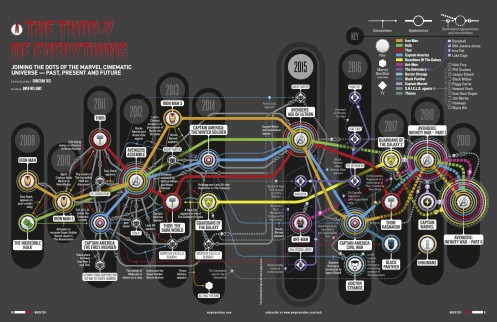04/09/2015 The Film Poster in the Digital Space

In too many ways to mention the digital era is expanding the possibilities of what film marketers can do, and how they engage with their audiences. What does this mean for the good old-fashioned movie poster as it finds itself becoming less and less relevant in our digital world of video? At the moment it feels as if the humble poster is served at best as a teaser for the teaser trailer and at worst, simply something that is shoved out aimlessly simply because it’s always been done.
Traditionally, the key artwork is the first major asset of the film marketer’s campaign and is generally intended for outdoor use. Despite this, the typical film-goer will likely see this on the film page’s Twitter, on Empire’s website, on Cineworld’s ticketing site, way before they see it in an outdoor environment. Film marketers need to bear in mind that the optimum Facebook and Instagram images are 1:1, the optimum Twitter size is 2:1 – nowhere near one sheet specs. Bespoke posters that adapt to social platforms could go a long way to increasing social awareness.
I wanted to draw out a couple of recent experiments into the modernisation of the humble poster for the digital world that could offer its salvation. The most notable is the animated or motion poster, which takes the poster and adds a video element, similar to the popular Cinemagraph trend. The biggest film to try this graphic was Terminator Genisys who released both a teaser and main animated poster to mixed opinion, however other strong recent examples include Wild Tales and Sinister 2. This is an interesting and potentially exciting step forward to the traditional poster, as the digital world speedily turns to video, it is only natural that the movie poster should follow suit. It is definitely more eye-catching and more fitting for online. The obvious limit is that this could easily turn into a standard Vine/video asset that is now so prevalent in a film marketer’s toolkit. Is this an update or simply the first step along the road to extinction?
The second key experiment is fan involvement/public sourced artwork. Fan-art competitions are hardly something new in the movie poster world, but creating an official campaign asset sourced from a fan is an opportunity for all films with a built in fanbase. This was recently experimented with by 20th Century Fox for their Kingsman: The Secret Service campaign, who instigated a global competition for a limited edition but official print. Targeted at designers, the entry quality was of a very high standard, all the fans could get involved by voting and the winning design was chosen by the Matthew Vaughn himself. If the franchise has a strong enough fan-base, this is certainly something to consider. Who better to promote your film that those that are most passionate about it?
Leading out of this, the fan-made poster is driving much greater currency than ever before – the stamp of officialness brushed aside for quality of design. Take this incredible fan poster for The Shining or the stunning fan-made infographic of the MCU, both exquisitely executed with references to the films that only other fans would understand. This is undoubtedly a very appealing prospect for the super-fan, who will be organically sharing his/her positive opinions across social platform – rewarding these fans will only make them shout louder. One example where this was particularly effective was for eOne’s Nightcrawler. After Shortlist ran an ‘alternate poster’ article featuring some fairly impressive designs, one was chosen as the cover of the Nightcrawler steelbook. This limited edition steelbook sold out in less than a day, and is strong proof that poster artwork can help drive sales.
Some brands are jumping on this lengthening trend by offering their own official alternate posters for fans and collectors. The most prominent being IMAX, who exclusively obtain a piece of official alternate artwork to give out to their customers (e.g. Interstellar) and in doing so help position themselves as the ultimate destination for the hard-core film fan. Most excitingly, for Avengers: Age Of Ultron, IMAX presented four possible alternate poster options and asked social media fans to vote for their favourite to be the official IMAX piece. In one stroke, engaging fans socially and encouraging discussion and organic reach, while simultaneously ensuring that their poster would be highly popular. Which studio will be the first to try this tactic for their official artwork?
The future of the film poster within the digital space is one that involves the fans (a time-lapse of a beautifully drawn poster being created), that is updated for the digital age (a horror movie poster that delivers a jump scare), or using it to tap into new audiences (get a social influencer to create it, and vlog about how he/she does it), or it risks irrelevance.
So where do you think the future of the movie poster is going? Is it loud and proud in the digital space, or the stuff of offline billboards and student’s bedrooms?



